A LITTLE OF MY STORY
-A Nostalgic Journey Down the Memory Lane
The news media was inundated with coverage of the Ambani pre-wedding ceremonies in early 2024. World leaders, business magnates and renowned performers were all making headlines as they flocked to attend the extravaganza. Social media was ablaze with daily doses of glamorous snippets from the lavish affair of the big fat wedding.
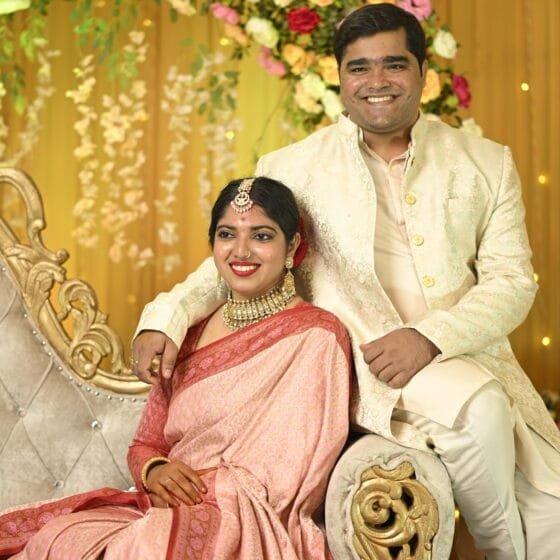
My family and I, almost during the same time, were on our way to attend a wedding. It was my favorite niece’s wedding. Set for an auspicious date that aligned with the horoscopes of the bride and groom—February 15th, 2024—the wedding was to take place in my hometown of Berhampur, where I had spent my childhood and young adult years. Berhampur, often referred to as the “Silk City” of Odisha, is a quaint and densely populated town characterized by its modesty. While it may not boast cosmopolitan amenities, it certainly exudes nostalgic charm for me.
It was a moment of enchanting anticipation. For us, marriages signify more than just the union of two individuals; they symbolize the coming together of two families. The ceremonial occasion also allows us to reconnect with friends and family we seldom see amidst the hustle and bustle of daily life. And it’s not just a matter of a day. The joy is shared over two to three days of ceremonies, depending on the tradition of that particular region of India. Nowadays, many Indian weddings follow standardized patterns with a blend of Western influences. I can’t blame this trend, as many Indians are global citizens and cross-cultural marriages seem to be the norm. I prefer if the authenticity is preserved without trailing behind social media trends. Rituals have meanings specific to the region, and they carry significant cultural values. These rituals also impart many valuable lessons to the newlyweds in a playful manner before starting their journey. Following trends is more for making things picture-perfect rather than reflecting the cultural reality.


I was extremely proud of my niece, who asked for the wedding to be a simple affair as an authentic Odia-style wedding. She and her partner in crime planned the whole event together meticulously to retain all traditional elements, ensuring that everyone from the family, friends, and neighbors where they spent their formative years could take part.
The wedding took place on the rooftop of my parent’s home. No one had lived in this house after my parents left for their heavenly abode. The house is of a decent size but it is like an airbnb without amenities because no one lives there. No doubt this brought new challenges to the table apart from the other challenges faced while arranging such functions. One such challenge is the narrow street leading to the house. Neither the road is well developed nor there are designated parking spots. But later I realized because I stay abroad I see things from a different perspective and thought that to be a challenge. To local people, this was not an issue. No one gives you a hefty parking ticket anyway.
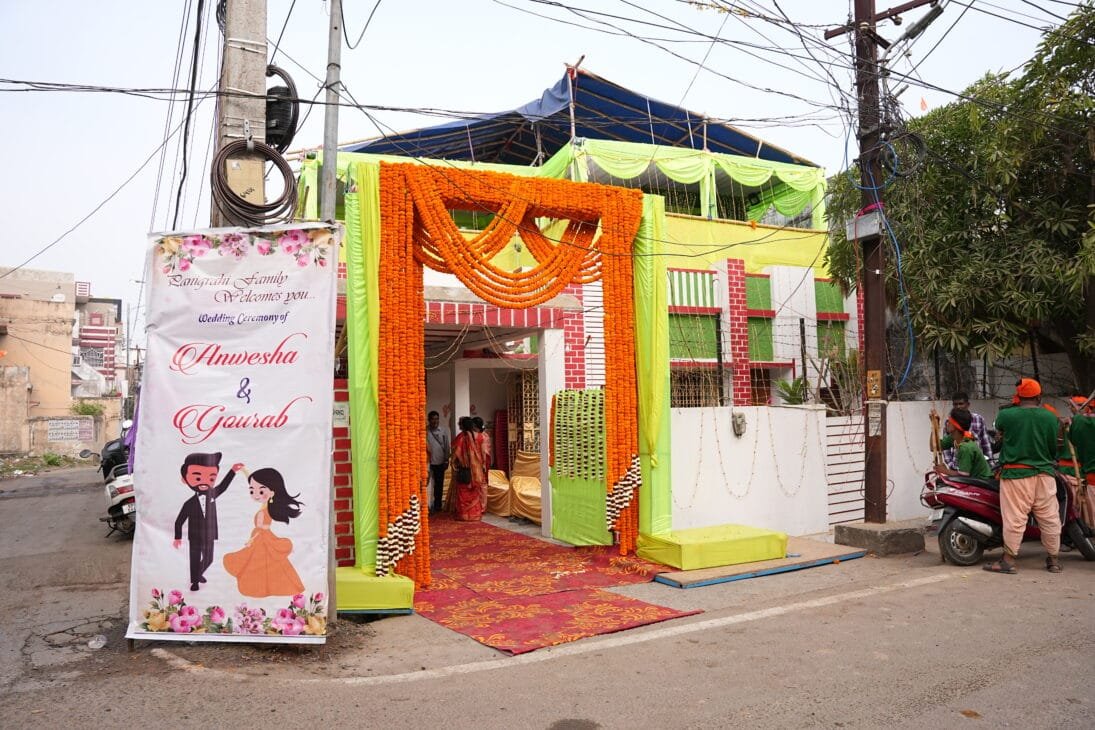
On the 14th evening, a pre-wedding ceremony of ‘haldi‘, known as ‘Gandhaṣaṇa‘ in Odisha, took place. Along with the melodies of ‘Managalgeeti’ family and friends gather to smear scented sandalwood and turmeric paste on the bride and groom before they bathe in their respective homes. This sacred ritual at the bride’s home commenced with married women walking to the nearest Devi temple, usually dedicated to Goddess Parvati, to seek Her permission and blessings. They displayed all the bridal accessories, including the mangal sutra, bangles, toe rings, sarees, and jewelry, to Devi. After the ritualistic worship, the blessed sindoor, turmeric, sandalwood paste, and water from the temple are collected to prepare the haldi bath for the bride. This ceremony not only preserves tradition but also fosters joy among all participants. Engaging in playful activities with the turmeric paste adds to the festive atmosphere. Although the melodies of ‘Managalgeeti’, once sung by married ladies, have faded, the pre-wedding ritual persists in its role of breaking the ice and facilitating connections among attendees.
Following the bath, intricate mehendi designs are adorned upon the bride’s hands and feet, while guests join in the festivities by applying henna as well. Opting for authenticity with enthusiasm, my niece embraced the idea of using a paste made from real henna leaves. Professional henna artists were also present, decorating guests’ hands with intricate patterns. As the night progressed, attendees enjoyed a feast, accompanied by the nostalgic melodies of old classics playing softly in the background. I particularly relished the dessert ‘Mālpuā’ from the day’s menu. Later, some relatives stayed in the house while others sought rest at nearby relatives’ places for the night.
For tying the nuptial knot, the auspicious time was determined beforehand by consulting the jyotiṣa (astrologer) who matches the horoscopes of the bride and the groom, as is customary in Odia weddings, particularly in Brahmin families. The auspicious moment called ‘lagna’ was found to be early in the morning. With anticipation and excitement, we all prepared and assembled on the morning of the 15th, gathering by 6:30 am. The decorators, working tirelessly through the night, adorned the entrance of the house and the mandap at the rooftop with fresh marigold flowers and lush green leaves, creating an atmosphere of elegance and charm. The mandap itself, enveloped in nature’s beauty, felt like a serene grove, transporting us to appreciate the wonders of the natural world.
All of us were ready and waiting to receive the groom’s party called ‘Barayātri’ (Bārāt). The bride didn’t want to splurge on makeup artists who often follow social media trends. She instead sought the help of her friends and cousins to get dressed with utmost simplicity. She looked elegant in her ‘Baula Pāta’, a turmeric-colored saree with a red border, which is a traditional attire commonly worn during the marriage in Odisha. She was thrilled when she found a saree in the market that looked almost the same as her mother’s bridal saree from 30 years ago. I’m sure my sister was extremely proud of this heartfelt gesture.
couldn’t help but admire the couple’s thoughtful decision to incorporate the Ranapā dance into their wedding festivities, eschewing the typical contemporary band party with loud music and firecrackers. The Ranapa dance has its origin in martial arts and holds deep cultural significance in the coastal areas of Odisha, particularly in the Ganjam district. In this captivating dance form performers gracefully maneuver atop Ranapas, or stilts, while mock fights choreographed to the rhythmic beats of ‘Dhol’ and ‘Mahuri’ add a unique flair. The dancers also interpret songs depicting Lord Krishna’s childhood tales, adding depth to the performance.

As the groom’s barayātri procession made its way through the narrow streets, including the groom’s immediate family, close friends, and the team of Ranapā dancers, it was a sight to behold and left a lasting impression on all who witnessed it. The energetic beats were complemented by skilled artisans blowing conches, who showcased their skills by harmoniously blowing two conches simultaneously, creating a mesmerizing ambiance. After the ritual of Bātabaran, where the bride’s father welcomes the groom, the official wedding ceremony commenced. For the next few hours, the sacred rituals took place on the mandap encircling the holy fire, with the priests chanting sacred verses from both the sides.
Another distinctive tradition of Odisha known as ‘Hastaganthi‘ unfolded, wherein the hands of both the bride and groom were tied together. This symbolic act is believed to represent the surrendering of egos and the acceptance of each other, accompanied by a solemn promise to fulfill duties and responsibilities in their union.


Following the Hastaganthi ritual a lighthearted activity ensues, typically involving the bride’s younger sisters playfully demanding a bribe before untying the knot. Traditionally, this negotiation involves haggling for money or other forms of compensation. However at this wedding I noticed a shift in generational dynamics as the sister opted for kind gestures from the groom instead of monetary demands. Regardless, the playful banter continued, adding to the festive spirit of the ceremony.
The ‘Saptapadi‘, a ritual common to all Indian weddings, followed where the bride and groom circled the sacred fire seven times, exchanging seven vows. Additionally, a playful activity involving the bride and groom playing with shells was observed. This activity serves to familiarize the couple with each other and subtly express affection by allowing one partner to win. In the past these activities served a deeper purpose. Since the bride and groom often did not have physical contact before their wedding day, these lighthearted moments provided an opportunity for them to gauge each other’s warmth and build anticipation before embarking on their journey together.

In Odia tradition, the exchange of ‘Baramala’ and the application of ‘sindoor’ to the bride’s head by the groom are common customs. Additionally, from this auspicious day, the bride commences wearing toe-rings, known as ‘bichchiā’ as per our tradition. Both sindoor and bichchiā serve as unmistakable indicators of a married woman’s status.
In traditional societies, customs and social norms dictate interactions between boys and girls before marriage, varying widely based on cultural, religious, and regional factors. Some cultures enforce strictsindoor and bichchiāothers permit limited interactions in community events. Female marital symbols like sindoor and bichchiā are crucial, visibly indicating marital status and reinforcing societal norms and expectations.

The wedding ceremony concluded by 11:30 am and everyone dispersed, preparing to reconvene for a formal reception scheduled at a different venue for lunch by 1:30 pm. The extended family and friends gathered to bless the newlyweds and extend congratulations to both sides of the family. Despite their simple attire, the couple exuded a regal aura and captivated everyone’s hearts. I couldn’t help but admire my niece’s decision not to hire a makeup artist. In many Indian weddings, excessive makeup can often make the bride feel uncomfortable, affecting her confidence, mood, and behavior. While seemingly a small detail, it often leaves lasting memories. Therefore I was immensely proud of their aesthetic sense and commitment to authenticity.
That evening served as a much-needed rest for everyone, with no further rituals scheduled. After the excitement and busyness of the wedding ceremony and reception, it was essential for everyone to take a moment to relax and rejuvenate. Tiredness had settled in making rest a priority for all.
Then on the early morning of the 16th the ‘bidai’ ceremony was scheduled. This poignant event marks the official departure of the bride from her parent’s home to join her in-laws’ household as her own. A sense of melancholy lingers as parents realize their daughter is leaving their care and authority behind. Tears are shed as they worry about her adjustment and acceptance in her new environment. However, the sadness is tempered by the knowledge that she is embarking on a new chapter in her life. In my niece’s case she had the comfort of knowing her in-laws well, having known her now-husband since high school. This familiarity likely eased some of the apprehension and sadness surrounding the bidai ceremony.
Following the bidai ceremony the rituals commence at the groom’s home. Upon the bride’s arrival, the groom’s sister blocks the entry until she receives compensation. This compensation, often known as ‘Nanada Potli‘, is brought by the bride and typically contains goodies for her sister-in-law along with a bowl of jaggery symbolizing the beginning of a sweet friendship. In earlier times, when girls were often married at a younger age, this practice allowed them to bring along goodies to create a familiar environment in their new home. These customs likely played a crucial role in fostering familial bonds and integration within the new household, symbolizing the beginning of a harmonious relationship between the bride and her new family.
At the groom’s place a sacred fire ceremony, ‘Chauthi Homa’, takes place in the same room where the newlyweds will reside. Following the rituals the bed is prepared and adorned for their conjugal journey to start. Traditionally this ceremony occurs on the fourth night after the wedding, modern customs have become more flexible to accommodate everyone’s schedules, considering that many attendees have jobs to return to. But for my niece, this homa took place on the 18th Feb as per tradition. After all the rituals were over by the afternoon, the groom’s family had arranged an elaborate reception at a newly constructed venue in town where many of extended family members from the bride’s side were also invited. This allowed us to meet their family members and enjoy their warm hospitality. In particular, I loved the display of food in decorated matkas adding the flavors of ancient times. I remember relishing gol-gappas to my heart’s content.
It’s heartening for me to know that both my daughters found themselves drawn to the simplicity and emotional warmth of traditional weddings, despite attending big events in both the USA and India. This preference likely stems from the deep-seated emotional connections. The presence of old neighbors further adds to the nostalgic ambiance, reinforcing a sense of community and shared history.

While an extravagant event at a lavish venue undoubtedly offers a different kind of pleasure, it’s the intimate setting of the home that allows for deeper connections and cherished memories. There’s a unique warmth that emanates from gathering within familiar walls, a sense of belonging that can’t be replicated in any grand ballroom or opulent banquet hall.
I’ve always found solace in celebrating happy occasions within the comfort of my home, where walls retain memories and whisper stories to the next generation. Though I was initially nervous about the logistics involved, with all my heart, I appreciated my niece’s choice. Her decision not only honored our family’s heritage but also invited us to pause and reflect on the true essence of joy and togetherness. Each ritual, each moment shared among family and friends, seemed to breathe life into age-old customs, weaving a tapestry of connection that transcended time and space. Her wedding served as a poignant reminder of the enduring significance of tradition and familial bonds, even amidst the allure of grander, more extravagant celebrations.
The entire atmosphere of these two days transported me back down the memory lane of my own marriage ceremony. As the festivities unfolded, I couldn’t help but feel nostalgic, realizing that amidst all the splendor and extravagance, it’s the simple moments shared with loved ones that we cherish most dearly in the years to come.
February, 2024

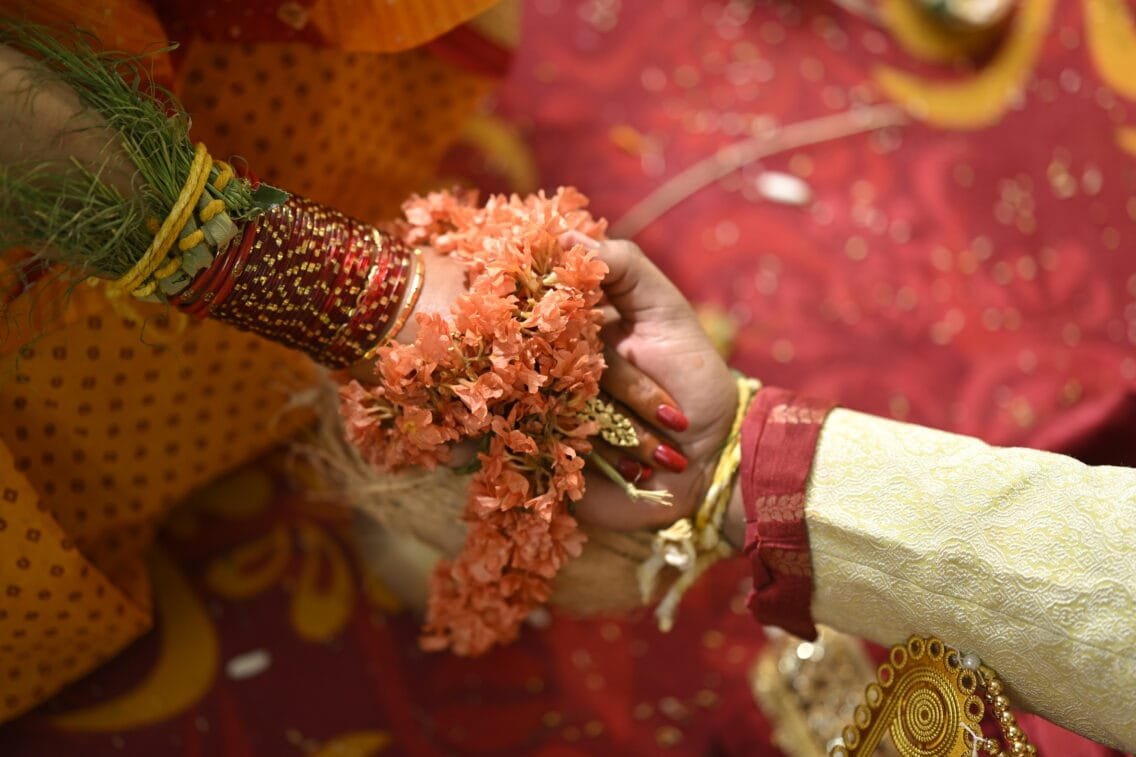








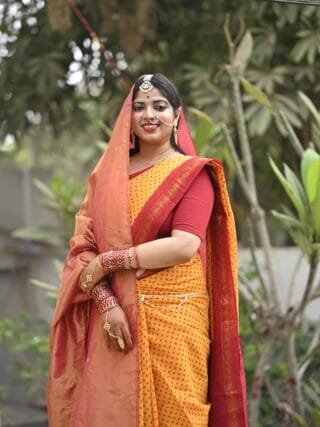



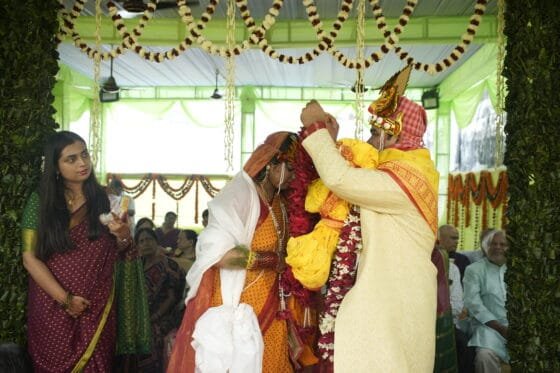



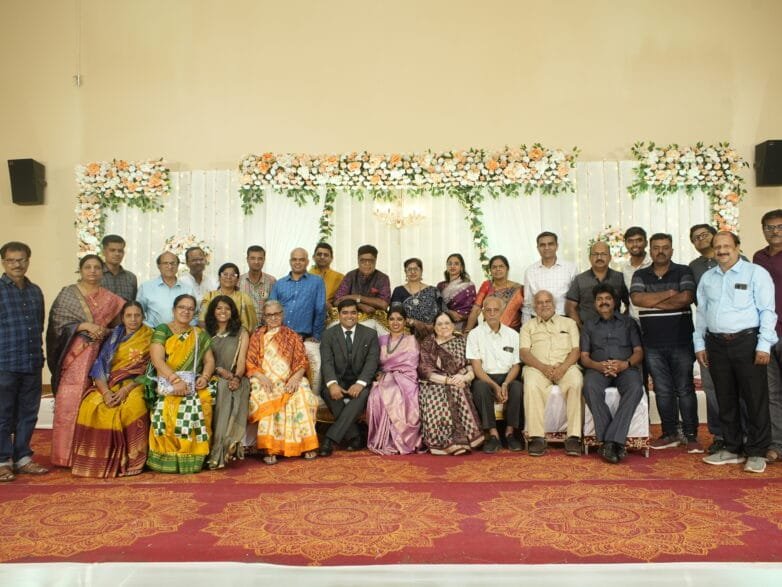
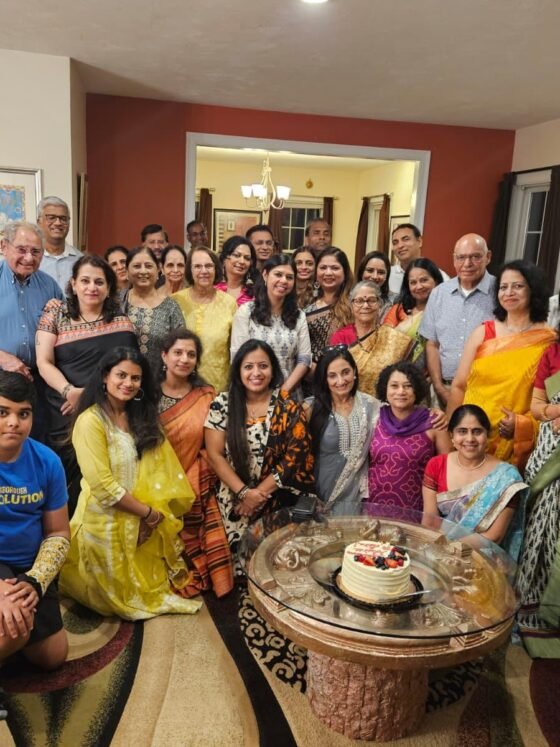
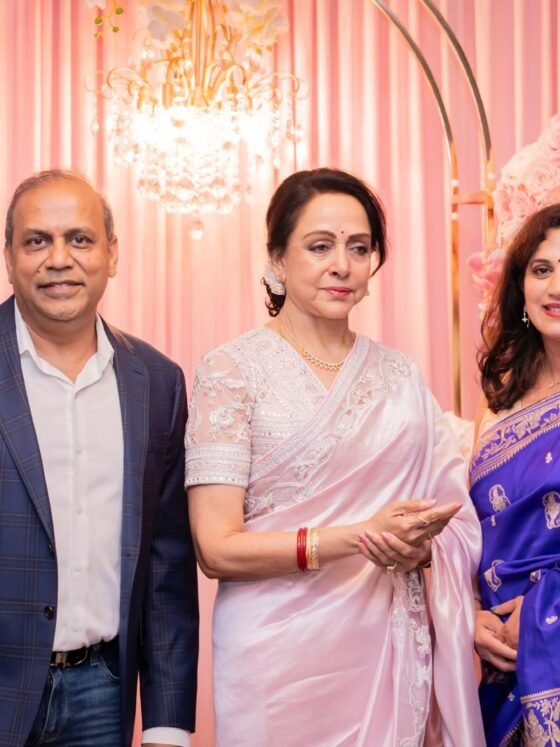
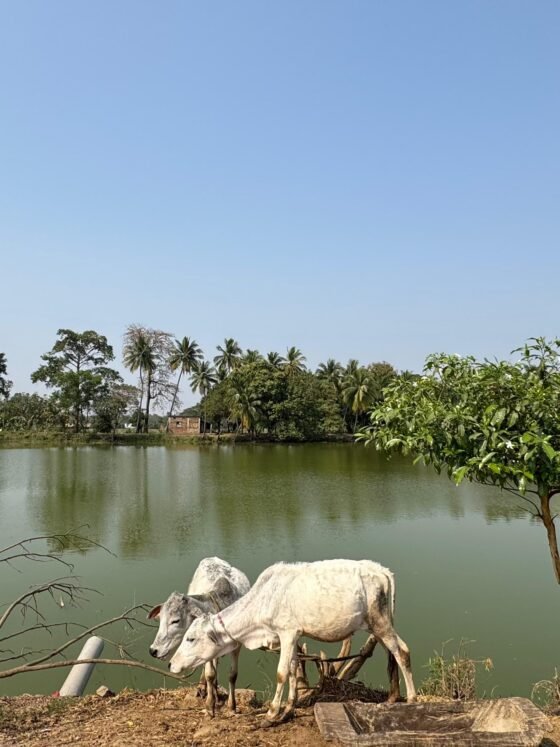
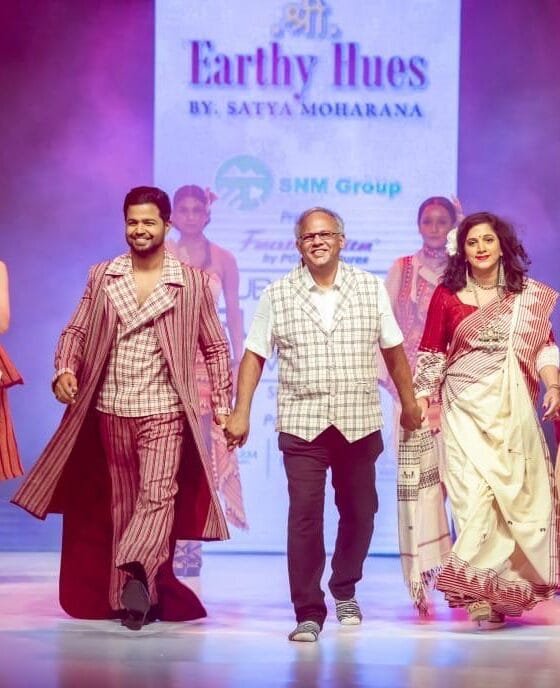


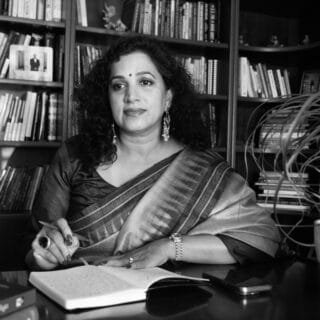
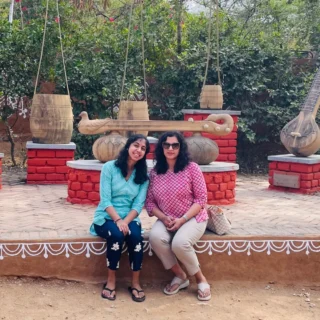
Manorama Choudhury
08/01/2024What a lovely song in the teaser for this beautiful traditional wedding ceremony! Loads of love and blessings to the newlyweds!
Biraja Mahapatra
08/02/2024So well written. Loved it.
Manorama Choudhury
08/08/2024Thank you Biraja bhai. Some memories need to be documented to be cherished forever. I wrote this blog to educate my kids about the reasons behind our rituals. Please do enjoy other blogs.
Satyam
08/01/2024Indian marriages are really a festival to celebrate, a new journey, for any family!!
Manorama Choudhury
08/08/2024Agree. It is the rituals celebrated with family that bind us together and create memories to cherish!
Maneesh Srivastava
08/02/2024Nice blog. Beautifully captured the traditional Indian wedding.
Manorama Choudhury
08/08/2024Thank you for reading. It was a memorable event for the family, laced with traditional rituals and heartwarming stories to whisper about in the future.
Anwesha
08/02/2024We cannot thank you enough for not only gracing our special days but also adding this marvelous memoir. Reading this feels like reliving the sacramental and ceremonial moments altogether again! ❤️
Manorama Choudhury
08/08/2024I am very proud of you both and wish you a lifetime of love and happiness in each other’s company. Hugs!
Suprayas
08/14/2024Indian marriages are really a festival
Manorama Choudhury
08/20/2024Waiting for your wedding fun!
Ali Rizvi
08/17/2024Dear Manorama,
Reading your beautiful blog on traditional Indian weddings was like getting an all-access pass to a grand, colorful celebration without the need to dress up or survive the aunties’ probing questions! You’ve captured the essence of these occasions so vividly, showing us that weddings in India are not just about tying the knot—they’re about tying entire families into one big, joyful (and occasionally chaotic) celebration.
The vibrant pictures you included were pure eye candy, and I could almost hear the dhols and smell the biryani. Each image brought your words to life, making the reader feel as if they were right there in the middle of the festivities—minus the sweat and sore feet from dancing!
I truly loved how you described the ‘Nanada Potli’ tradition, where the bride brings goodies for her sister-in-law, including a bowl of jaggery to sweeten the start of their friendship. What a clever way to ensure that your new family doesn’t just like you—they’re sweet on you from day one! These charming customs, unique to different parts of our wonderfully diverse and inclusive India, really highlight how traditions play a crucial role in turning a new house into a home filled with love (and, apparently, sweets).
Your words brought back fond memories of the warmth, joy, and deep respect for traditions that make Indian weddings so unique. The way you narrated this holy (and sometimes hilariously hectic) journey, full of love, laughter, and blessings, truly touched my heart. It’s a reflection of the loving, caring, and ever-smiling person you are—someone who always sees the beauty (and humor) in every aspect of life and shares it with the world.
Thank you for taking us on this heartfelt and fun-filled journey. Your ever-smiling presence shines through your writing, making it all the more special.
With love and a big smile. I miss the laddoos that are common in North Indian weddings.
Manorama Choudhury
08/20/2024Ali bhai. I am so thrilled to know you enjoyed the wedding and danced without sore feet. Thank you for taking time out to share your detailed feedback. It is always worth sharing all that brings happiness. Much love!
Sibabrata Choudhury
03/04/2025What an innovative presentation!! Thank you @manoramachoudhury, wonderfully written and presented
Manorama Choudhury
03/06/2025Much appreciated your kind words. I sincerely hope this blog helps young readers ready to start their married life. Technological innovations have grown too fast and neither our education system nor social infrastructure is geared to adjust yet. Many don’t realize the negative impact. While documenting a memorable event in our family I tried my best to make it educative for others. Thanks again!
Dr. R. K. Das
03/07/2025Thrilled to go through such a lively account of an Odia wedding ceremony chronologically woven beginning with the customary pre- wedding ‘ Haldi’ ceremony at the bride’s abode and ending with the grand reception on the fourth day at the groom’s place described in a lucid language in an absorbing style. The write- up underlines how significant a role traditions play in our social life making it thriving, pulsating and vibrant. It also sends a message to the rising generation that much as we appreciate the modernizing trends in western culture, we need to reiterate our faith in the time honoured ceremonial customs which not only enrich our social life but also give us an identity of being the torch bearers of a rich cultural tradition.
Manorama Choudhury
03/07/2025So kind of you to read through the details and share your valuable feedback! It is important that we understand the meaning behind rituals rather than follow them blindly. A deeper understanding strengthens our foundation and allows us to truly appreciate their significance. I feel proud to have written this educative piece, especially with personal anecdotes, to make it more relatable and meaningful. Feel free to share the blog with anyone. Regards!